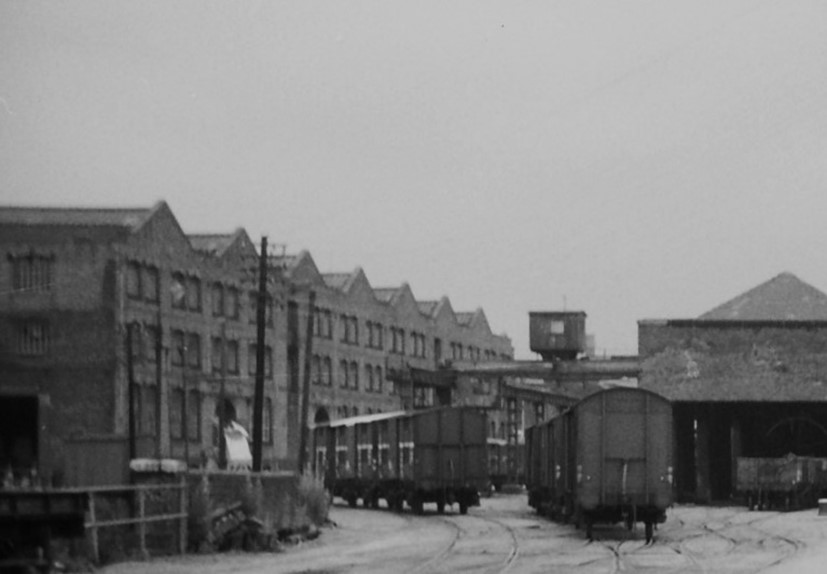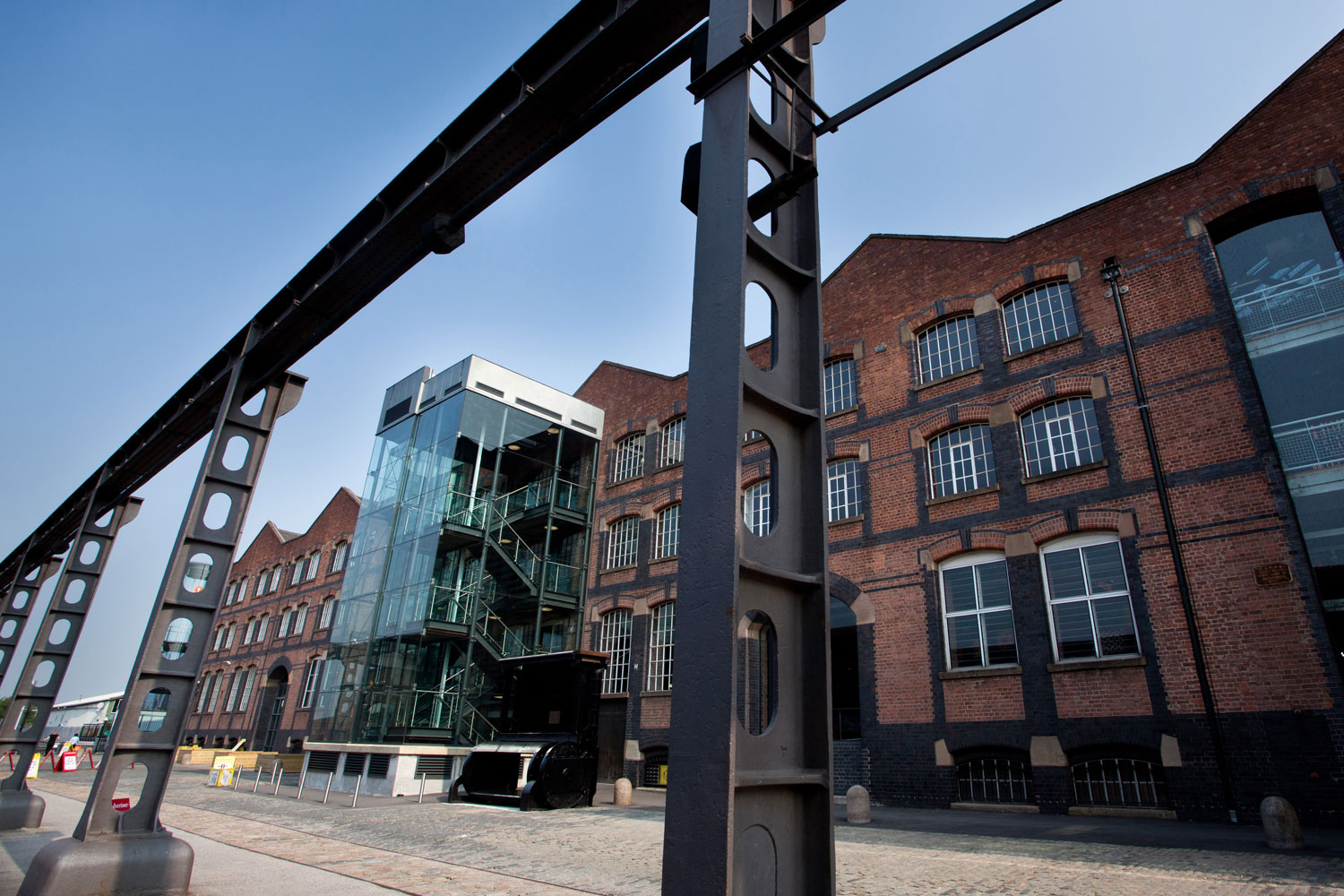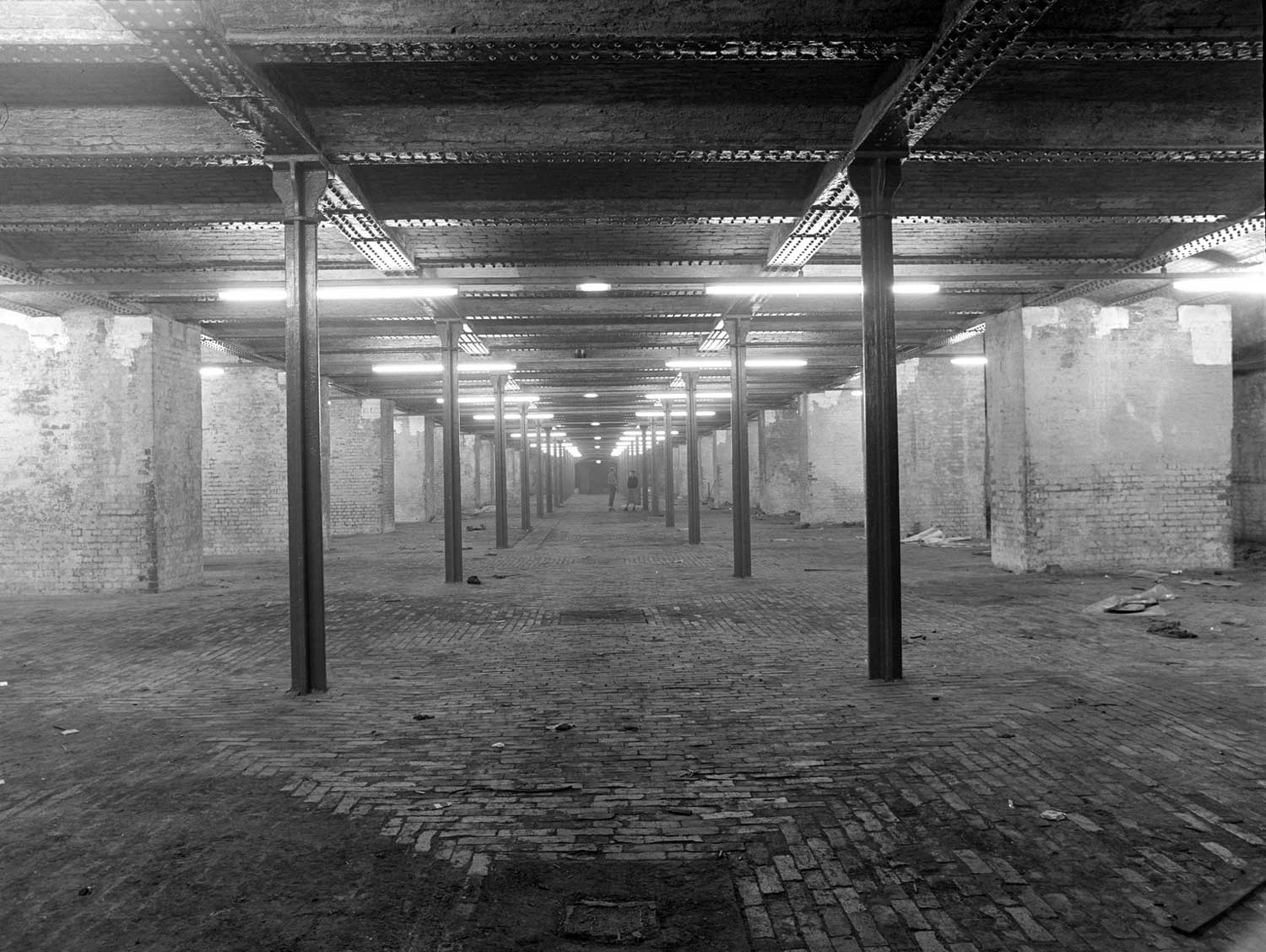Senior Curator of Industrial Heritage Katie Belshaw peels back the layers of history to reveal why the Special Exhibitions Gallery space itself deserves as much attention as the exhibitions it will host.
A unique industrial heritage site
One of the Science and Industry Museum’s most unique features is the opportunity it offers visitors to experience exhibitions and events about world-changing science and technology, against the backdrop of one of the nation’s most significant industrial heritage sites. The museum site, formerly Liverpool Road Station, boasts a remarkable set of listed railway buildings, which together, reflect the historical significance of this small patch of Manchester.
Liverpool Road Station was the Manchester terminus of the world’s first inter-city railway. Opening in 1830, the new line transformed passenger and goods transport, connecting industrial Manchester with Liverpool’s port.

From its revolutionary beginnings, Liverpool Road Station expanded into a bustling freight hub, operating for almost 150 years as a gateway between Manchester and the world. After the station closed in 1975, it took years of dedication to reshape the site into the museum we know and love, and transformations continue to this today.

Science Museum Group © The Board of Trustees of the Science Museum
The New Warehouse
By the time construction of the New Warehouse began in the late 1870s, Liverpool Road Station was part of a network of railway freight hubs keeping raw materials, finished goods, livestock and fresh produce moving in and out of industrial Manchester and the region. As goods traffic increased, more room was urgently needed for freight at the station.
The building of the New Warehouse was overseen by the London and North Western Railway Company’s Chief Engineer Francis Stevenson. With four floors, including a basement, and seven bays, the warehouse, completed in 1882, was state-of-the-art, and greatly enhanced Liverpool Road Station’s capacity.

Science Museum Group © The Board of Trustees of the Science Museum
Goods store to gallery
The transformation of the lower ground floor of the Grade II listed New Warehouse into a beautiful new Special Exhibitions Gallery is finally complete. The building’s historic fabric has been revealed and restored, and the new gallery provides a vision of its former life as a bustling warehouse space, alive with clanging machinery and busy workers unloading, lifting, sorting and packing goods.

Science Museum Group © The Board of Trustees of the Science Museum
The lower ground floor of the New Warehouse provided much needed storage space for goods at Liverpool Road Station. When the warehouse was built, industrial Manchester was at the heart of the world’s textiles trade, and one of the New Warehouse’s most important cargoes was cotton. Bales of raw cotton destined for the region’s textile mills, as well as cloth and yarn, were stored in and shipped through the warehouse.

Beneath the rails
Workers in the lower ground floor would have been used to the rumbling of heavy wagons moving above their heads. Railway tracks from the station’s viaduct, known as the ‘pineapple line’, extended into the ground floor of the New Warehouse above. Wagonloads of goods were shunted into the building and unloaded onto platforms either side of the rails by workers operating hydraulic cranes and hoists. Empty wagons were loaded in the same way and shunted out of the warehouse for transport.

Located directly beneath the former tracks and one of the unloading platforms, the ceiling of the Special Exhibitions Gallery has a unique form, rising into a focal vault in the centre where it corresponds to one of the unloading platforms directly above, in what is now the museum’s Textiles Gallery. Looking up, visitors to the Special Exhibitions Gallery will also spot hatches in the ceiling, through which goods were transferred for storage in the lower ground floor.

Beautiful bricks
Visitors to the Special Exhibitions Gallery will be struck by the space’s beautiful, brick jack arch ceilings. Their shallow vaulted structure, spanning substantial iron girders, was used widely in 19th-century industrial buildings like warehouses, mills and factories, because of its ability to support heavy loads. Jack arches were also relatively fire-proof, a must for Liverpool Road Station, which had lost two cotton storage warehouses to fire less than 20 years before the New Warehouse was built.

Science Museum Group © The Board of Trustees of the Science Museum
Visitors should also keep an eye out for the small sections of blue brick detailing on the pillars that run through the gallery, which were designed to support the weight of the wagons moving above. First developed in the 1850s and known as Staffordshire blue brick, it is extremely hard-wearing, and would have protected the pillars’ corners from bumps and scrapes from trolley-loads of goods being hauled through the space by busy workers. Blue bricks are also relatively damp resistant, as well as decorative, and the eagle-eyed will notice them around doorways and window arches throughout the New Warehouse.
Looking forwards
Liverpool Road Station has always been a place of revolution. From the first passengers and goods that departed from here by steam locomotive in 1830, to the state-of-the-art New Warehouse built in 1882, the site has played host to world-shaping developments in technology and transport. Located on this globally significant industrial heritage site, the Science and Industry Museum is uniquely placed to inspire audiences with ideas that change the world. The New Special Exhibitions Gallery will be at the heart of delivering this mission for years to come.
Find out more about the history of our site, our collection and our local area in our Local History blog archive.
Looking forward to seeing the new exhibition galleries but also remembering it when it was used to display the early history of Manchester , and the way sewage was moved even go seeing rats in the crevices ! My young twin grandsons wanted me to take them to see it every school holiday . They always had a wonderful time and we will never forget it . Hopefully I will soon be able to take them back to look at the structure of this building and how it worked for the storage and removal of goods . They are now 17 and will , I hope, appreciate its real purpose while remembering the magjc of that earlier exhibition .